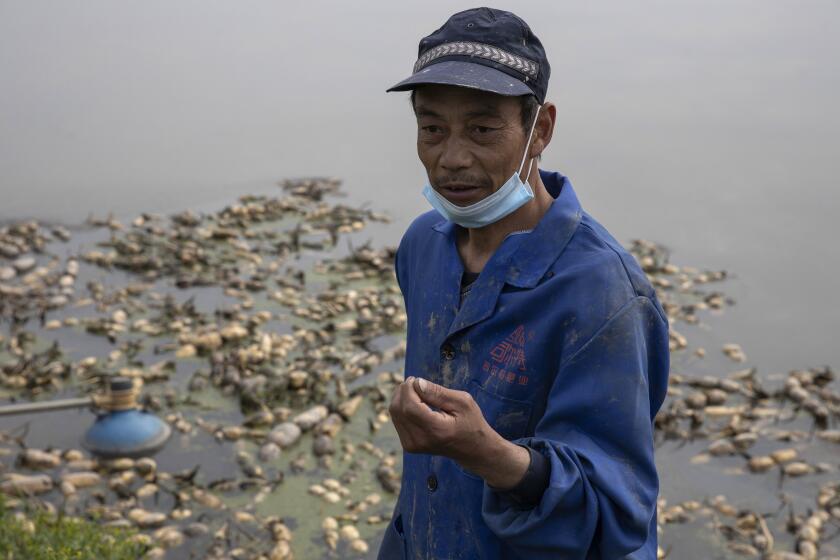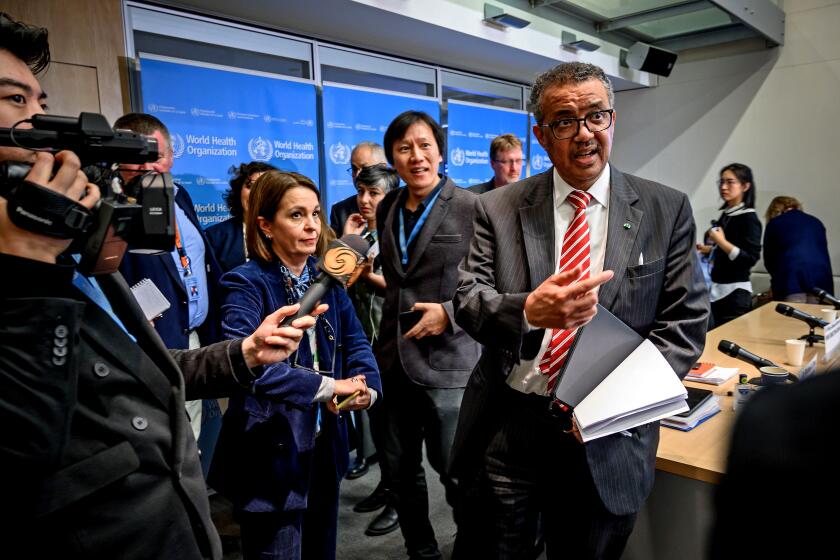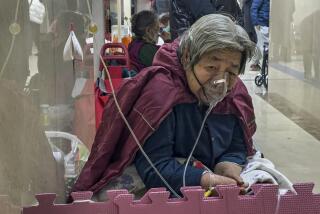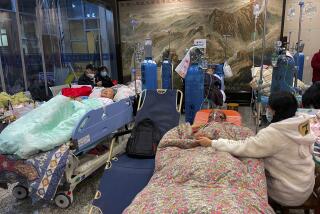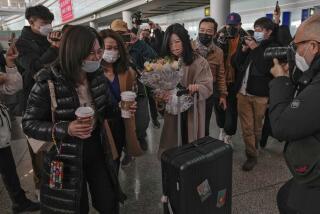China didn’t warn public of likely coronavirus pandemic for six key days
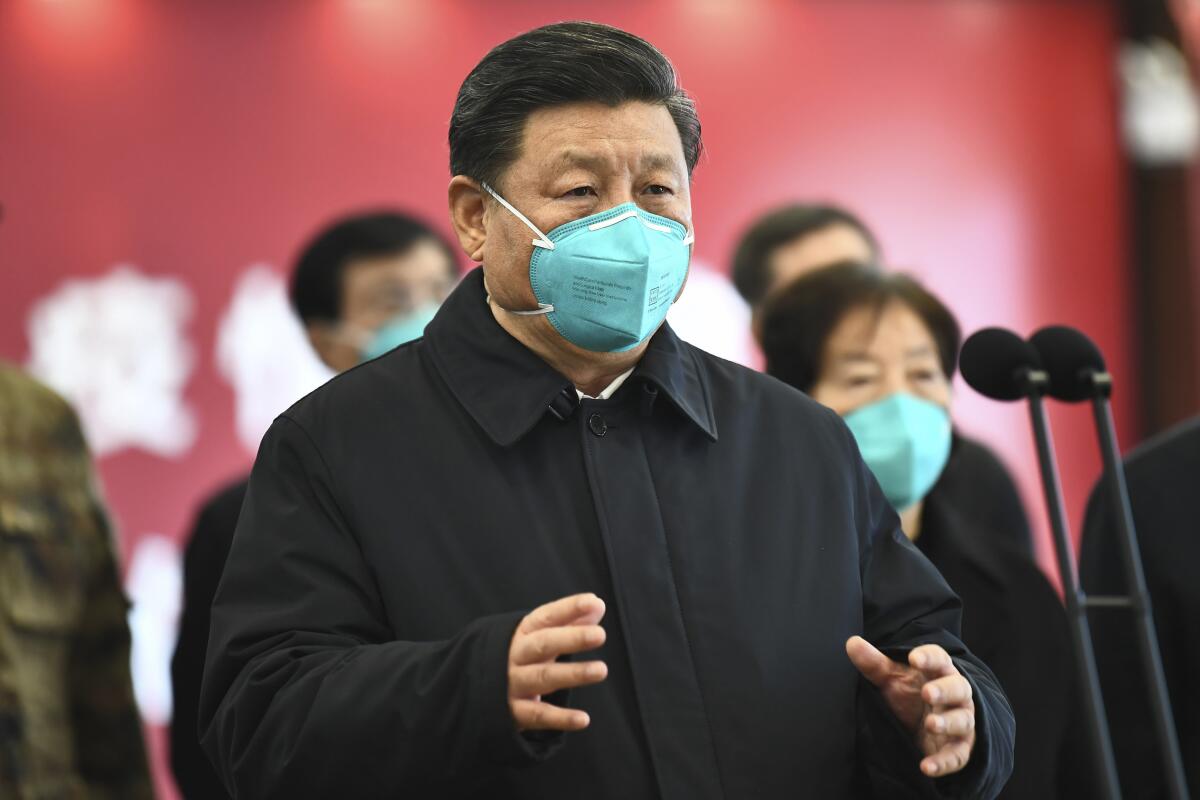
- Share via
In the six days after top Chinese officials secretly determined they likely were facing a pandemic from a new coronavirus, the city of Wuhan at the epicenter of the disease hosted a mass banquet for tens of thousands of people; millions began traveling through for Lunar New Year celebrations.
President Xi Jinping warned the public on the seventh day, Jan. 20. But by that time, more than 3,000 people had been infected during almost a week of public silence, according to internal documents obtained by the Associated Press and expert estimates based on retrospective infection data.
Six days.
That delay from Jan. 14 to Jan. 20 was neither the first mistake made by Chinese officials at all levels in confronting the outbreak, nor the longest lag, as governments around the world have dragged their feet for weeks and even months in addressing the virus.
But the delay by the first country to face the new coronavirus came at a critical time — the beginning of the outbreak. China’s attempt to walk a line between alerting the public and avoiding panic set the stage for a pandemic that has infected almost 2 million people and taken more than 126,000 lives.
“This is tremendous,” said Zuo-Feng Zhang, an epidemiologist at UCLA. “If they took action six days earlier, there would have been much fewer patients and medical facilities would have been sufficient.”
However, another epidemiologist, Benjamin Cowley at the University of Hong Kong, noted that it may have been a tricky call. If health officials raise the alarm prematurely, it can damage their credibility — “like crying wolf” — and may cripple their ability to mobilize the public, he said.
The six-day delay by China’s leaders in Beijing came on top of almost two weeks during which the national Center for Disease Control did not register any new cases, internal bulletins obtained by the AP confirmed. Yet during that time, from Jan. 5 to Jan. 17, hundreds of patients were appearing in hospitals not just in Wuhan — which finally reopened last week — but across the country.
China is easing coronavirus travel controls, but crops deemed nonessential wither while farmers await permission to move them to markets.
China’s rigid controls on information, bureaucratic hurdles and a reluctance to send bad news up the chain of command muffled early warnings, experts said. Without these internal reports, it took the first case outside China, in Thailand on Jan. 13, to galvanize leaders in Beijing into recognizing the possible pandemic before them.
The Chinese government has repeatedly denied suppressing information in the early days, saying it immediately reported the outbreak to the World Health Organization.
“Allegations of a cover-up or lack of transparency in China are groundless,” said foreign ministry spokesman Zhao Lijian at a Thursday news conference.
The documents show that the head of China’s National Health Commission, Ma Xiaowei, laid out a grim assessment of the situation in a confidential Jan. 14 teleconference with provincial health officials. A memo states that the teleconference was held to convey instructions on the coronavirus from President Xi Jinping, Premier Li Keqiang and Vice Premier Sun Chunlan, but does not specify what those instructions were.
“The epidemic situation is still severe and complex, the most severe challenge since SARS in 2003, and is likely to develop into a major public health event,” the memo cites Ma as saying.
In a faxed statement, the National Health Commission said China had published information on the outbreak in an “open, transparent, responsible and timely manner,” in accordance with “important instructions” repeatedly issued by President Xi.
The documents come from an anonymous source in the medical field who did not want to be named for fear of retribution. The AP confirmed the contents with two other sources in public health familiar with the teleconference.
Under a section titled “sober understanding of the situation,” the memo singled out the case in Thailand, saying that the situation had “changed significantly” because of the possible spread of the virus abroad.
“All localities must prepare for and respond to a pandemic,” it said.
The National Health Commission distributed a 63-page set of instructions to provincial health officials, obtained by the AP. The instructions, marked “not to be publicly disclosed,” ordered health officials nationwide to identify suspected cases, hospitals to open fever clinics, and doctors and nurses to don protective gear.
In public, however, officials continued to downplay the threat.
“The risk of sustained human-to-human transmission is low,” Li Qun, the head of the China CDC’s emergency center, told Chinese state television on Jan. 15.
Under the new orders, on Jan. 16 officials in Wuhan and elsewhere finally got CDC-approved testing kits and a green light to start confirming new cases. Across the country, dozens of reported cases then began to surface, in some cases among patients who were infected earlier but had not yet been tested.
In combating the coronavirus pandemic, Trump’s America-first policies and testy relations with other leaders contributed to a lack of coordination.
On Jan. 20, President Xi issued his first public comments on the virus, saying the outbreak “must be taken seriously.” A leading Chinese epidemiologist, Zhong Nanshan, announced for the first time that the virus was transmissible from person to person.
The delay may support accusations by U.S. President Trump that the Chinese government’s secrecy held back the world’s response to the virus. However, even the public announcement on Jan. 20 left the U.S. nearly two months to prepare for the pandemic — time that the U.S. squandered.
Some health experts said Beijing took decisive action given the information available to them.
“They may not have said the right thing, but they were doing the right thing,” said Ray Yip, the retired founding head of the U.S. Centers for Disease Control’s office in China. “On the 20th, they sounded the alarm for the whole country, which is not an unreasonable delay.”
But others say an earlier warning would have saved lives. If the public had been warned a week earlier to practice social distancing, wear masks and cut back on travel, cases could have been cut by up to two-thirds, one paper later found.
“The earlier you act,” said Los Angeles epidemiologist Zhang, “the easier you can control the disease.”
More to Read
Sign up for Essential California
The most important California stories and recommendations in your inbox every morning.
You may occasionally receive promotional content from the Los Angeles Times.
